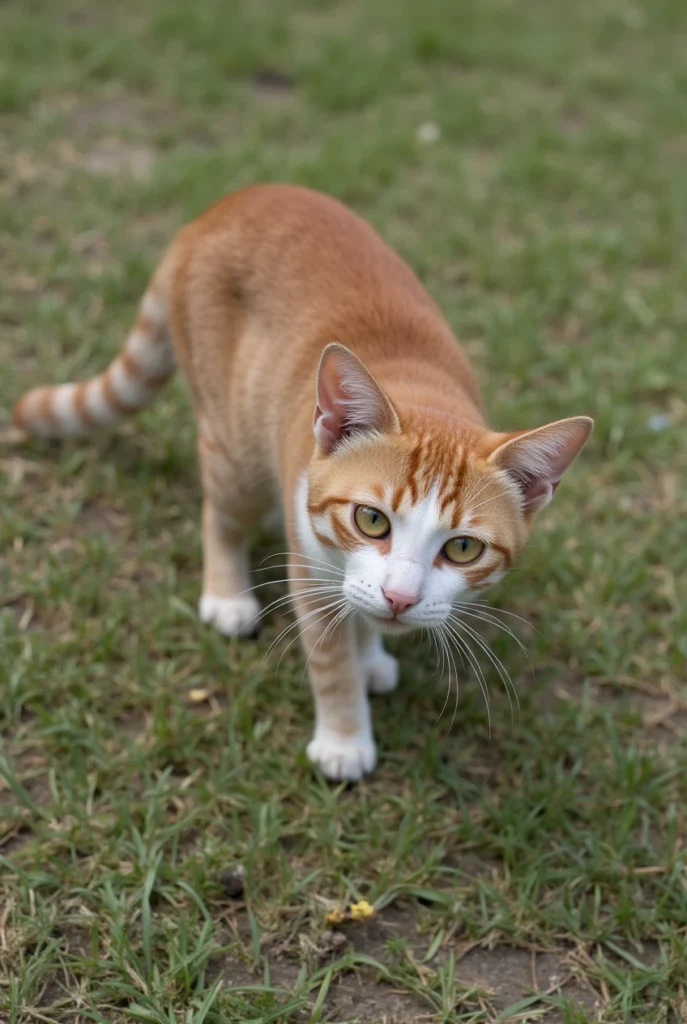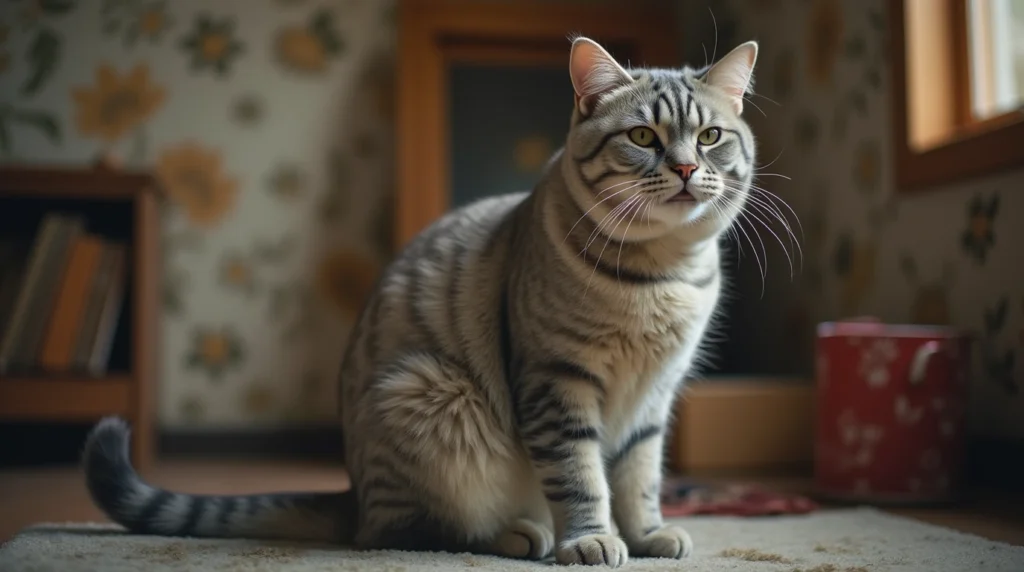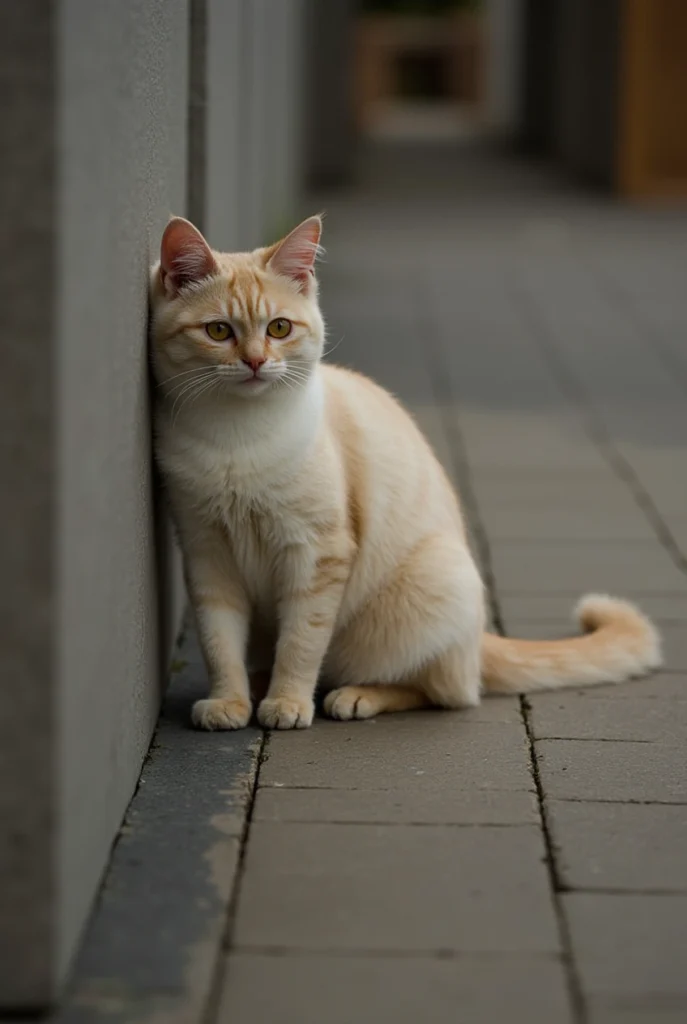There’s something deeply unsettling about watching your cat breathe heavy. Maybe you noticed their chest pumping faster than usual, or a strange raspiness that wasn’t there yesterday. Your brain flashes through every possibility—heatstroke, asthma, panic. Is it serious? Are you overreacting?
Here’s the truth: heavy breathing in cats isn’t something to brush off. But it also doesn’t always mean an emergency. The real challenge is knowing the difference.
This guide is here to help you decode those signs. We’ll break down what counts as “normal” feline breathing, explore the different types of heavy breathing (because yes, there’s more than one), and walk you through potential causes—from simple stress to serious health conditions. You’ll also get practical advice on what to do next, whether it’s calling the vet or calming your cat down at home.
If your cat is breathing heavily right now, stay with me. The next few minutes could give you the clarity (and calm) you need.
Table of Contents
What’s Normal and What’s Not in Cat Breathing

Before we panic, let’s anchor ourselves in the facts. Not every fast breath or chest movement means danger — but knowing your cat’s baseline can help you catch the outliers.
Understanding Normal Cat Breathing
A healthy cat at rest typically takes between 15 to 30 breaths per minute. These should be gentle, almost invisible. You might notice a slight rise and fall in their sides or abdomen, but it shouldn’t be dramatic. There’s no sound, no effort — just quiet, rhythmic airflow.
What throws many owners off is how subtle this “normal” actually looks. Cats aren’t like dogs — they rarely pant, and when they do, it usually means something’s off.
That said, context matters. After zooming around the house or during a hot day, your cat may breathe a bit faster for a short time. But if it continues when they’re at rest? That’s your signal to investigate.
How to Measure Your Cat’s Breathing at Home
Here’s a quick method to track your cat’s respiration safely — no vet tools required:
- Wait until your cat is calm and lying down.
- Watch their sides rise and fall — one rise and fall = one breath.
- Count the number of breaths over 30 seconds, then double it to get breaths per minute.
- Do this a few times a day over a week to get a reliable baseline.
Keep a note on your phone or fridge. When something changes, you’ll notice it.
FAQ: How many breaths per minute is normal for a cat?
Answer: A resting cat should breathe between 15 and 30 times per minute. Anything consistently above 40 at rest — especially with effort, sound, or open-mouth breathing — should be evaluated by a vet.
3 Types of Abnormal Breathing in Cats
Not all heavy breathing looks the same — and each type can signal something very different. Some cats breathe rapidly but quietly. Others look like they’re gasping or panting. Knowing which kind of breathing you’re seeing can make all the difference in how urgently you respond.
Panting – cat breathing heavy
We’re used to dogs panting — not cats. So when it happens, it can feel instantly alarming. But here’s the nuance: panting in cats isn’t always dangerous, but it’s almost never casual either.
What it looks like:
- Mouth open, tongue out
- Fast, shallow breaths
- Often seen after exertion or extreme heat
Normal vs. Concerning:
If your cat just finished chasing a laser pointer for 10 minutes and pants briefly, it might be okay. But if panting lasts longer than a couple of minutes, happens at rest, or comes with lethargy or drooling? Time to call the vet.
Tachypnea (Fast Breathing)– cat breathing heavy
This is when your cat breathes rapidly but without obvious struggle. No open mouth, no noise — just fast in-and-out movements.
Signs include:
- Breathing rate above 40 breaths per minute at rest
- Visible chest movement
- May seem anxious or restless
Tachypnea can be a subtle red flag — it often points to pain, fever, or heart and lung problems. Think of it as the body’s quiet distress signal.
Dyspnea (Labored Breathing) – cat breathing heavy
This is the most visibly distressing — and potentially serious — form. It’s when your cat is working hard just to breathe.
What you might notice:
- Flared nostrils
- Gasping, wheezing, or raspy sounds
- Neck stretched out, elbows splayed
- Cyanosis (blue or gray lips/tongue)
Dyspnea almost always requires immediate medical attention. If you see these signs, don’t wait — get your cat to a vet or emergency clinic.
FAQ: Is it ever normal for a cat to pant?
Answer: Rarely. Cats may pant after intense play or in high heat, but it should stop within a few minutes once they rest. Persistent or random panting, especially at rest, is usually a sign that something’s wrong.
Why Is My Cat Breathing Heavy? 10 Possible Causes

The moment you catch your cat breathing heavy, your mind likely jumps to worst-case scenarios. But slow down — while some causes are serious, others are manageable or temporary. Let’s unpack the most common culprits, from medical emergencies to environmental stressors.
1. Heart Disease – cat breathing heavy
Many cats suffer from silent heart issues like hypertrophic cardiomyopathy, which can cause fluid buildup in the lungs. This makes breathing harder, especially after mild activity.
What you might see: Heavy, labored breathing, lethargy, and hiding. Sometimes even collapse or open-mouth breathing.
2. Feline Asthma or Bronchitis – cat breathing heavy
Yes, cats can have asthma — and it’s more common than you think. Triggered by allergens like dust, pollen, or even scented litter.
What it looks like: Wheezing, coughing fits (often mistaken for hairballs), and rapid breathing after play.
3. Heatstroke or Overheating – cat breathing heavy
Unlike dogs, cats don’t handle heat well. If they’re panting, drooling, or collapsing on a hot day, this is a red flag.
Watch for: Open-mouth breathing, glassy eyes, vomiting, and weakness. Immediate cooling and vet attention is critical.
4. Stress or Fear – cat breathing heavy
Did your cat just have a vet visit or get chased by the dog? Short-term heavy breathing can be a stress response.
How to tell: It usually resolves within 10–15 minutes if the cat calms down and has a quiet space to recover.
5. Respiratory Infections – cat breathing heavy
Think feline flu. Viral or bacterial infections can cause congestion and fluid buildup in the lungs or nasal passages.
Symptoms include: Noisy breathing, nasal discharge, sneezing, and open-mouth breathing in severe cases.
6. Pain (From Injury or Illness) – cat breathing heavy
Cats hide pain well — but heavy breathing can be a subtle indicator. Internal injuries or even post-surgery pain may trigger it.
Context clues: Look for changes in posture, reluctance to move, and unusual hiding behavior.
7. Obesity – cat breathing heavy
Extra weight puts pressure on the lungs and diaphragm. Even mild movement can trigger tachypnea.
Clue: Your cat pants after climbing stairs or playing for less than a minute.
8. Anemia – cat breathing heavy
Less oxygen in the blood means your cat has to breathe harder to compensate. This can be due to parasites, kidney disease, or internal bleeding.
Signs: Pale gums, weakness, and rapid breathing even at rest.
9. Fluid in Chest (Pleural Effusion) – cat breathing heavy
Fluid outside the lungs compresses them — often linked to heart disease, cancer, or infection.
Telltale sign: Deep, slow breathing with extended neck and minimal movement. Emergency situation.
10. Foreign Object or Obstruction – cat breathing heavy
If your cat ate something strange or inhaled debris, it could block airways.
Urgent signs: Gagging, pawing at the mouth, choking sounds. Do not wait.
FAQ: Can stress make my cat breathe heavy?
Answer: Yes. Just like in humans, stress triggers a fight-or-flight response in cats. This can lead to rapid breathing or panting. If the cause is short-term (like fireworks or a vet visit), the breathing should normalize within 10–15 minutes in a calm environment.
First Aid for Heavy Breathing in Cats (At Home)
When your cat is breathing heavy, your first instinct might be to scoop them up and rush to the vet. But let’s take a beat. In some cases, that panic could make things worse — especially if your cat is already in respiratory distress.
The goal here is to assess calmly, intervene only when safe, and know exactly when it’s time to act.
What You Should Do First – cat breathing heavy
- Observe Without Touching
Stay close, but don’t crowd or pick up your cat. Touching them in distress might spike their anxiety or worsen their breathing. - Check Their Position
Cats in trouble often sit or lay with elbows out and neck extended. If you see this posture, treat it as serious. - Count Their Breaths
Use the method we shared earlier — 15 seconds, count the breaths, multiply by four. Log it down. - Record a Video
If the episode is unusual or escalating, take a short video. It’ll help your vet immensely if you end up needing a visit. - Lower the Temperature
If you suspect overheating, move your cat to a cooler, shaded area. Use a fan or damp towel nearby — but never pour water on them.
What You Shouldn’t Do – cat breathing heavy
- Don’t force food, water, or medicine.
Breathing is their top priority — don’t risk choking. - Don’t delay if there are clear distress signs.
Open-mouth breathing, blue gums, or unresponsiveness = emergency. - Don’t assume it’s a one-off.
Even if they “seem fine” after a few minutes, follow up with your vet.
FAQ: What should I do if my cat suddenly starts breathing heavily?
Answer:
Stay calm. Observe from a short distance and check their breathing rate. Avoid touching or restraining them. If the breathing doesn’t stabilize in 5–10 minutes — or if it worsens, includes open-mouth breathing, or comes with other symptoms like drooling, pale gums, or collapse — call your vet or an emergency clinic immediately.
Veterinary Diagnosis and Treatment Options
If you’ve never rushed a cat to the vet before, the unknown can be paralyzing. What will they do? Will it be invasive? Expensive? Is it already too late?
Here’s the truth: most vets don’t expect you to have answers — they just need to see what you’re seeing. And that’s where their process begins.
What to Expect at the Vet
- Immediate Oxygen Support (if critical)
If your cat is in visible distress, they’ll often go straight into an oxygen cage to stabilize breathing before doing anything else. - Physical Examination
The vet will check heart rate, lung sounds, gum color, and breathing patterns. They’ll ask for context: How long has this been happening? Any vomiting, coughing, trauma? - Diagnostic Testing
Depending on severity, your vet might recommend:- Chest X-rays (to check for fluid, masses, or heart size)
- Ultrasound or ECG (for heart disease)
- Bloodwork (for infection, anemia, or systemic issues)
- Pulse oximetry or blood gases (to measure oxygen levels)
Treatment Options Based on Diagnosis
- Asthma: Inhalers, corticosteroids, or bronchodilators
- Heart Disease: Diuretics, beta-blockers, fluid drainage
- Infection: Antibiotics, IV fluids, steam therapy
- Heatstroke: IV fluids, cooling techniques, monitoring
- Obstruction or Trauma: Surgery, oxygen therapy, hospitalization
The good news? Many breathing issues in cats are treatable when caught early. What matters most is acting before the situation snowballs.
FAQ: How do vets treat heavy breathing in cats?
Answer:
Treatment depends on the cause. For example, asthma may be treated with corticosteroids or inhalers, while heart-related breathing issues might require diuretics and oxygen support. The first step is usually stabilizing the cat’s breathing, then running tests to pinpoint the root cause.
How to Prevent Cat Breathing Problems in the Future
Once you’ve seen your cat struggle to breathe, you never want to witness it again. The memory sticks — that helpless, urgent rhythm in their chest. But here’s the upside: many breathing issues are preventable or manageable with a few thoughtful habits.
Prevention isn’t about paranoia. It’s about creating an environment where your cat can literally breathe easier.
1. Schedule Regular Vet Visits
It sounds obvious, but annual (or biannual for senior cats) checkups are often when hidden issues like heart murmurs or early asthma are caught. Cats hide illness — your vet knows how to spot what you can’t.
2. Control Allergens and Air Quality
Dust, pollen, mold, and even scented litter can trigger asthma or respiratory irritation.
- Use unscented, low-dust litter
- Vacuum with HEPA filters
- Avoid strong cleaners and sprays
- Consider an air purifier — especially in small apartments
3. Manage Your Cat’s Weight
Excess weight compresses the lungs and restricts movement, which can exacerbate breathing issues.
- Feed appropriate portions
- Avoid excessive treats
- Encourage play, even short bursts daily
4. Watch the Heat
Cats overheat fast — especially flat-faced breeds like Persians.
- Provide shaded resting spots in summer
- Never leave them in hot cars or closed rooms
- If your home runs warm, leave a fan or open window for circulation
5. Reduce Stress and Overexertion
Sudden loud noises, new pets, or chaotic environments can spike anxiety and breathing rates.
- Create calm, quiet “safe zones” in your home
- Use Feliway diffusers or calming routines for anxious cats
- Introduce changes gradually (new pets, furniture, travel)
FAQ: Can I prevent my cat from developing breathing problems?

Answer:
While not all conditions are preventable (like genetic heart disease), many causes of heavy breathing — like obesity, asthma triggers, or heatstroke — can be reduced with proper care. Think of it as building a breathing-friendly lifestyle: clean air, low stress, vet monitoring, and healthy weight go a long way.
Frequently Asked Questions (Quick Recap)
Even after reading everything, it’s normal to still wonder, “But what about my cat?” That’s the thing about breathing issues — they stir a quiet kind of panic. Let’s clear up a few more specific, often-Googled questions:
Can dental issues cause heavy breathing in cats?
Not directly — but severe oral infections can cause pain or inflammation that affects overall behavior and energy. If your cat avoids eating, drools, or has bad breath and breathes heavily, a full-mouth exam is wise.
Is heavy breathing more common in older cats?
Yes. Senior cats are more prone to heart disease, respiratory issues, and cancers — all of which can affect breathing. Any new respiratory symptoms in older cats should be investigated quickly.
Should I be worried if my cat only breathes heavily while purring?
Maybe. Purring can slightly increase breathing rate, but it should never look like panting or labored breathing. If their chest is pumping, mouth is open, or they seem tense while purring — that’s not typical.
Can cats breathe heavily after playing?
Yes — especially kittens or overweight cats. But breathing should normalize within a few minutes. If it doesn’t, or if it happens often, there may be an underlying issue worth checking.
Is it okay to wait and “watch it” for a day or two?
Not always. With breathing issues, erring on the side of caution is wise. If there’s open-mouth breathing, blue gums, or the episode repeats, waiting could cost you precious time.

